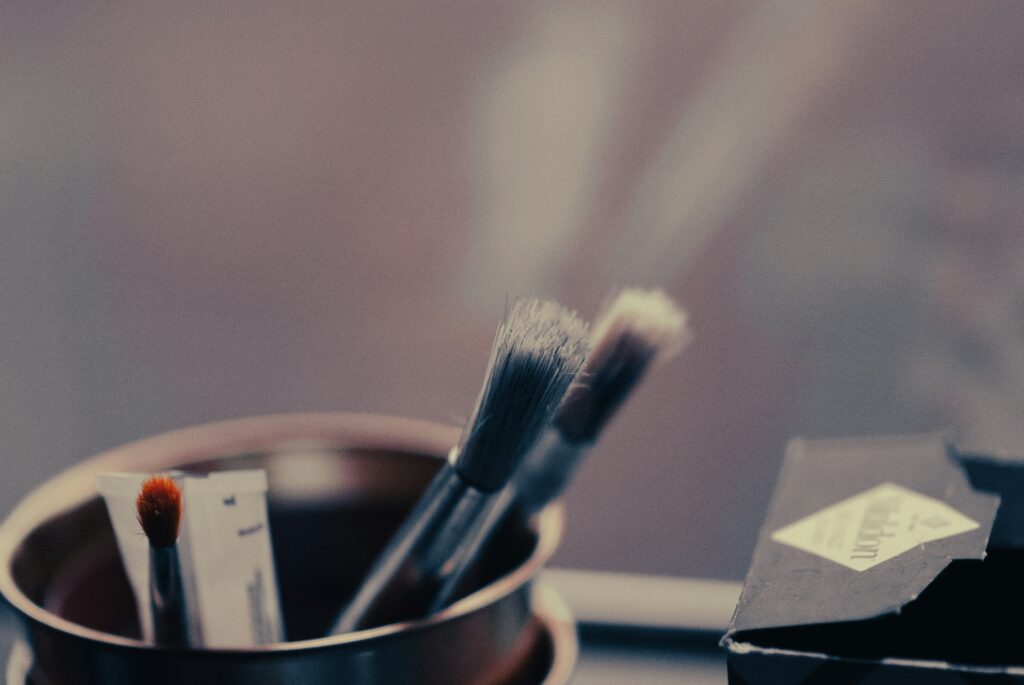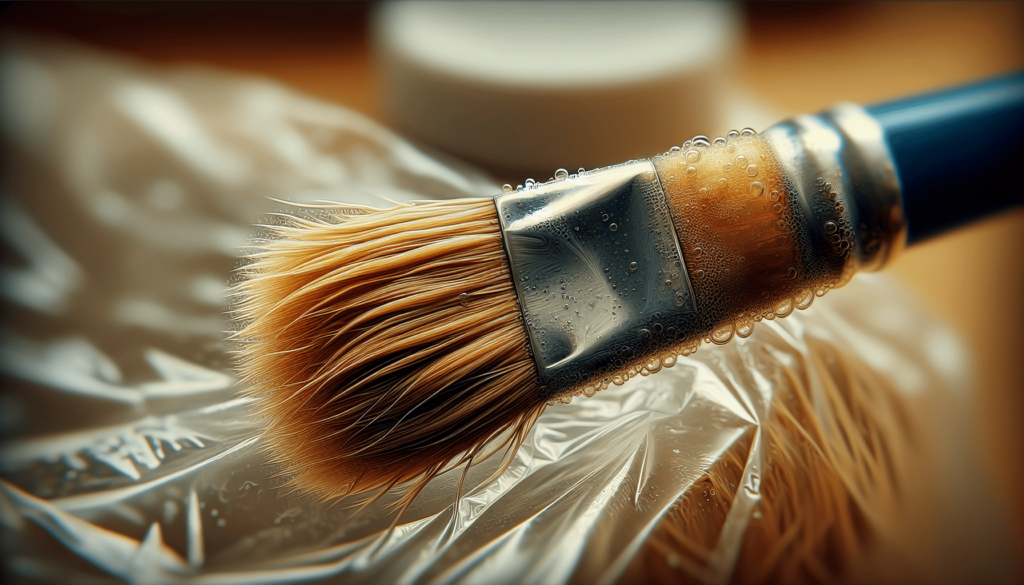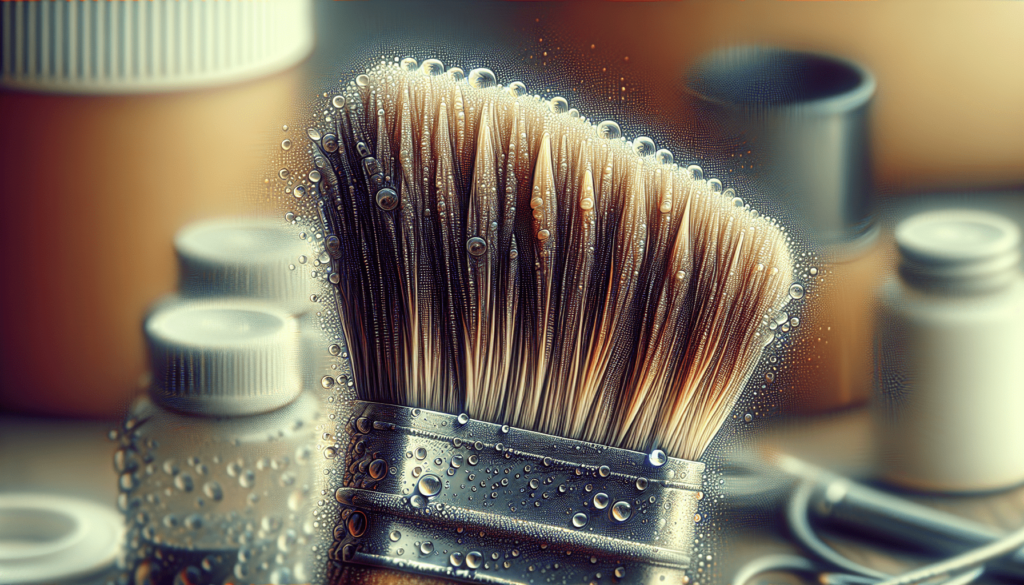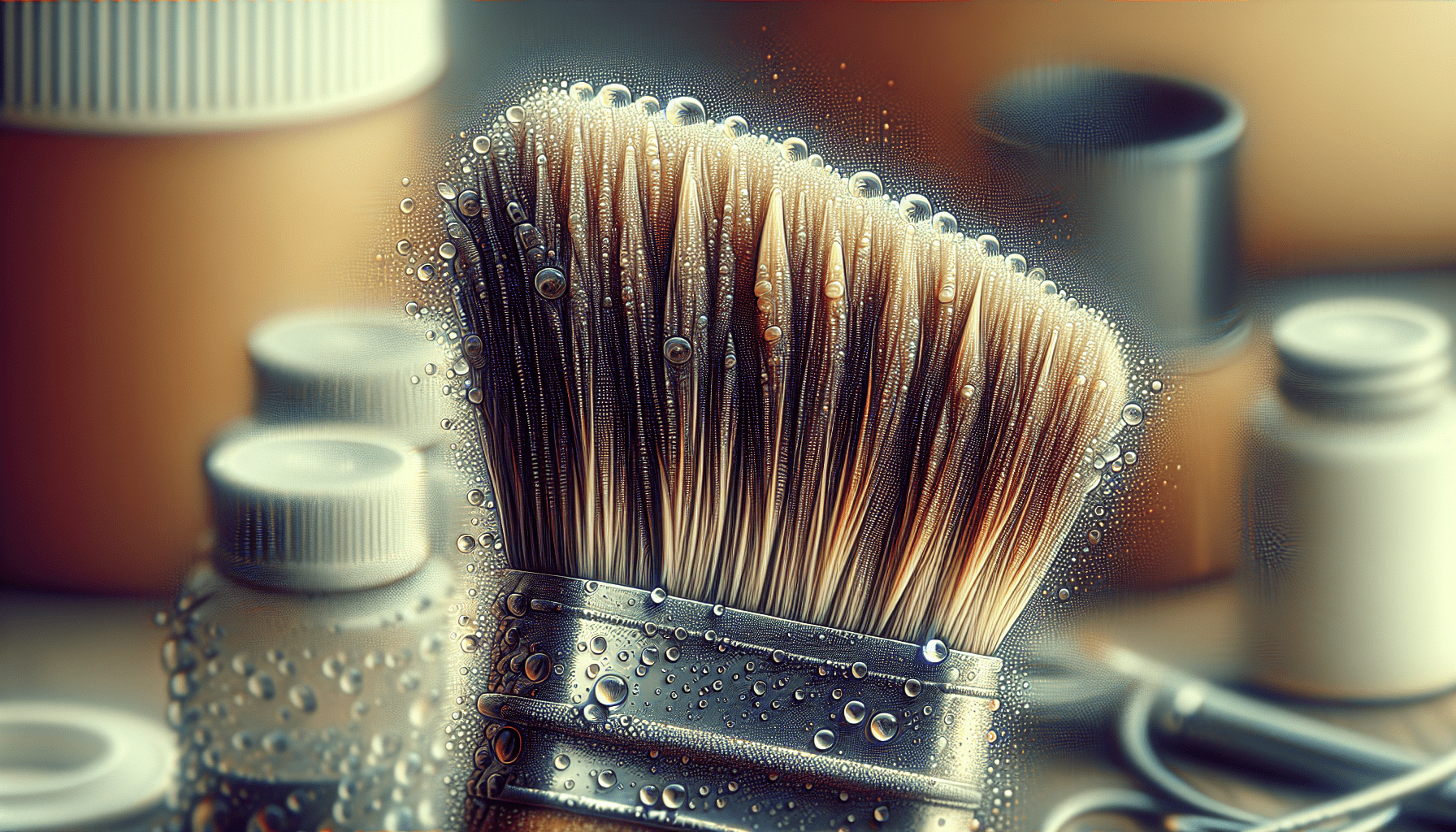As an ardent painter, you must understand the intricacies and nuances that come with maintaining your tools, specifically your paint brushes. In this article, you will gain insightful knowledge on one such significant aspect – keeping a paint brush wet overnight. The article is designed to impart you with practical tips, methods and best practices to effectively retain the moisture and pliability of your paint brushes, thus prolonging their longevity and ensuring optimal performance. This essential guide, “how to keep a paint brush wet overnight,” is curated with the intention of enhancing your skills and adding more ease and efficiency to your artistic pursuits.

Wrap the Brush
In order to protect your paintbrush and maintain its quality, it is essential to wrap it properly when not in use. This is a critical part of how to keep a paint brush wet overnight.
Wrap the brush tightly with plastic wrap
One of the methods you can use is wrapping the brush tightly with plastic wrap. Ensure you cover the entire bristle area, leaving no parts exposed. This will help keep the moisture intact and prevent the brush from drying out overnight.
Use aluminum foil to wrap the brush
Another option is to use aluminum foil. This acts as a barrier, preventing air from reaching the bristles of the paint brush. Aluminum foil can be more robust and less likely to tear than plastic wrap, making it a reliable option.
Place the brush in a plastic bag
Placing the paint brush in a plastic bag is another effective method. Once the brush is in the bag, eliminate as much air as possible and seal it tightly. This maintains a damp environment within the bag, keeping your brush in optimal condition.
Seal in a Container
Once you have wrapped the brush, it is important to take additional measures to further its protection. Sealing the brush in an airtight container helps maintain its moisture.
Store the brush in an airtight container
To keep the brush wet, it is recommended to store it in an airtight container. This minimizes the air exposure and preserves the moisture within the wrapping.
Use a zipper bag to seal the brush
Using a zipper bag can be a handy and practical option. Put the already wrapped brush inside a zipper bag, close the seal, and make sure it is thoroughly closed to avoid any air from entering.
Place the brush in a resealable plastic container
Storage of the wrapped paint brush in a resealable plastic container is another method. These come in various sizes and formats, hence make sure to choose one appropriately to fit your brush.
Use a Moisturizing Agent
Before you wrap your paint brush, it can be beneficial to utilize a moisturizing agent to help maintain adequate wetness.
Dip the brush in water before wrapping
Dipping the brush in water prior to wrapping can ensure the bristles remain moist. Shake off any excess water to prevent soaking your wrapping material.
Add a small amount of water to the wrapping material
Adding a small amount of water to the wrapping material can increase the moisture content within the wrap. Be careful not to add too much as this could make the wrap unstable and ineffective.
Moisten the brush with a damp cloth
Using a damp cloth, gently moisten the brush before wrapping. This approach keeps the bristles damp without soaking them.
Store in the Refrigerator
Keeping your wrapped paint brush in a cool environment can help to prolong its moisture. The refrigerator can provide such an environment.
Place the wrapped brush in the refrigerator
By placing your wrapped and sealed brush in the refrigerator, you take advantage of the cooler temperature to help maintain the brush’s dampness.
Ensure the brush is away from food
When storing your brush in the refrigerator, it is important to keep it separate from food items to avoid contamination. Use a designated storage area in your fridge for your paint brushes.
Check the temperature settings of the refrigerator
Ensure the cooling setting in your fridge is set correctly. Too cold a temperature could potentially freeze the brush, while too warm could promote bacterial growth.

Use a Brush Holder
A brush holder can provide an additional level of care, protecting your brush’s shape and prolonging its life.
Invest in a brush holder or rack
Buying a brush holder or rack can optimize the storage of your brushes. It can keep the brushes in an upright position which helps maintain their shape.
Hang the brush upside down in the holder
Hanging the brush upside down ensures any remaining water drips down, protecting the glue that holds the bristles from being damaged.
Ensure the brush bristles are not touching anything
To prevent the deformation of the bristles, make sure the brush is not touching anything when stored in the holder.
Keep in a Moist Environment
To maintain the brush’s moisture, it is crucial to keep it in a moist environment.
Spray water around the brush area
Spraying a light mist of water around the direct area where your brushes are stored can help regulate the moisture levels.
Place the brush near a humidifier
If your workplace is too dry, consider placing your brushes near a humidifier. The added moisture can help prolong the dampness of the brushes.
Cover the brush with a slightly damp cloth
Providing an additional moisture source such as a slightly damp cloth covering can also contribute to keeping your brush moist.

Avoid Exposure to Air
Controlling exposure to air is a key factor in keeping your brush from drying out.
Avoid leaving the brush uncovered
Leaving the brush uncovered allows air to rapidly dry it out. Always cover your brush when not in use.
Keep the brush inside a container or bag
Regardless of which wrapping method you use, always place your wrapped brush in a container or bag to add an extra barrier against the air.
Minimize air contact with the brush
From the moment you stop using your brush to when it is safely stored, you should aim to minimize the air contact with it.
Clean and Rehydrate
Properly preparing your brush for storage helps to preserve its quality and lifespan.
Clean the brush before storing overnight
Clear all the paint residue from the brush before storing it. Clean brushes maintain their function and last longer.
Remove excess paint and rinse with water
After using, rinse your paint brush thoroughly to remove any paint trapped between the bristles.
Apply a conditioning agent to the brush bristles
Using conditioning agents or mild soap after rinsing can help to rehydrate the bristles and keep them soft.

Choose the Right Brush Type
Choosing the right type of paintbrush for your painting and storage purposes is crucial.
Opt for synthetic brushes with water-based paint
Synthetic brushes tend to hold up well with water-based paints and are more resistant to damage if kept moist for prolonged periods.
Avoid natural hair brushes for overnight storage
Natural hair brushes can be more delicate and may not be the best fit for overnight storage, particularly when kept in wet conditions.
Consider the type of paint and medium used
The type of paint and painting medium you use can influence the care and storage of your brush.
Check the Brush Moistness
Before re-using your brush, it is important to evaluate its condition.
Inspect the brush before reusing
Assess the condition of your brush before using it. The bristles should be damp but not drenched or overly dry.
Make sure the bristles are still moist
Ensure the bristles have retained their moisture. If they are dry, they can lead to a less desirable painting effect.
Re-moisten the brush if needed
Should the brush be too dry, consider re-moistening it. Just ensure not to saturate it as this can cause the paint not to adhere correctly to the brush.
Keeping a paint brush wet overnight can extend its lifespan and ensure it delivers excellent results in your painting projects. By following these practical tips, you can make sure your paintbrush remains in top shape, ready for your next masterpiece.




